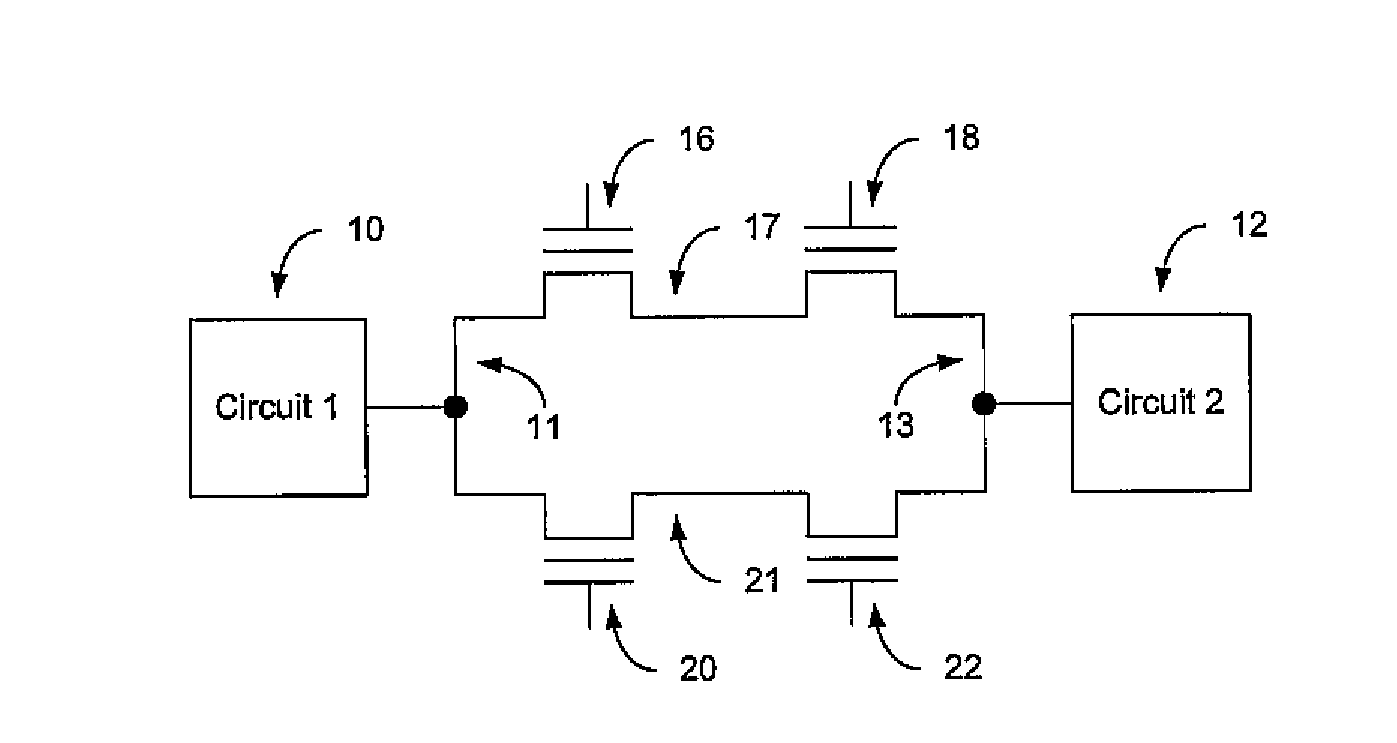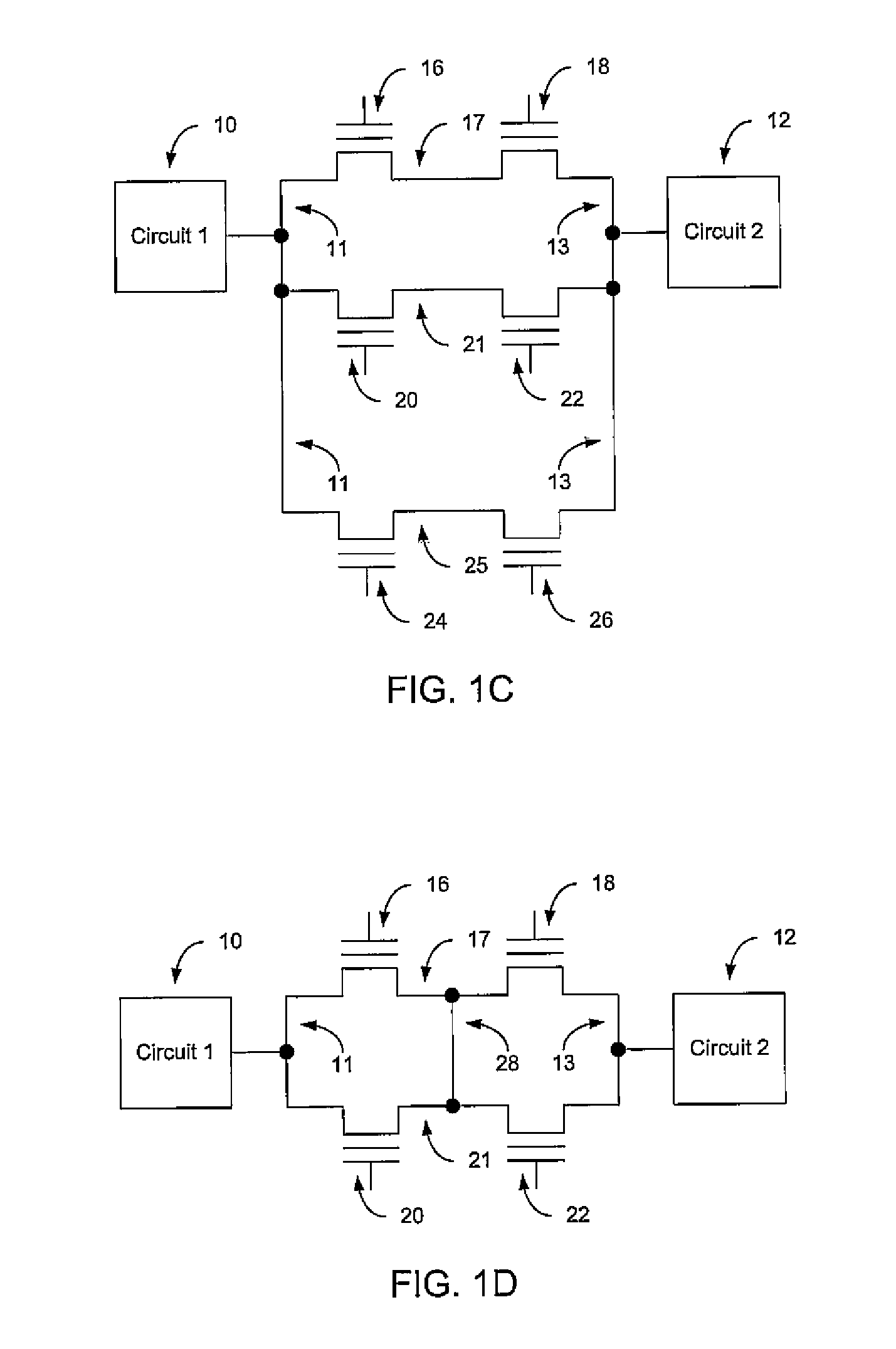Radiation-tolerant flash-based FPGA memory cells
a technology of flash-based fpga memory cells and flash-based gate arrays, which is applied in the field of flash-based fieldprogrammable gate arrays (fpga) integrated circuits, can solve the problems of damage to silicon dioxide, inability to tolerate, and compromise of the operation of the circuit programmed into the fpga
- Summary
- Abstract
- Description
- Claims
- Application Information
AI Technical Summary
Problems solved by technology
Method used
Image
Examples
Embodiment Construction
[0029]Persons of ordinary skill in the art will realize that the following description of the present invention is illustrative only and not in any way limiting. Other embodiments of the invention will readily suggest themselves to such skilled persons.
[0030]According to one aspect of the present invention, a radiation-tolerant flash-based FPGA switching element includes a plurality of memory cells each having a memory transistor and a switch transistor sharing a floating gate. The memory cells are combined in a series-parallel combination such that sets of switch transistors are wired in series and the sets of series-wired switch transistors are then wired in parallel. The four memory transistors associated with the series-parallel combination of switch transistors are all programmed to the same on or off state. The series combination prevents an “on” radiation-hit fault to one of the floating gates from creating a false connection and the parallel combination prevents an “off” rad...
PUM
 Login to View More
Login to View More Abstract
Description
Claims
Application Information
 Login to View More
Login to View More - R&D
- Intellectual Property
- Life Sciences
- Materials
- Tech Scout
- Unparalleled Data Quality
- Higher Quality Content
- 60% Fewer Hallucinations
Browse by: Latest US Patents, China's latest patents, Technical Efficacy Thesaurus, Application Domain, Technology Topic, Popular Technical Reports.
© 2025 PatSnap. All rights reserved.Legal|Privacy policy|Modern Slavery Act Transparency Statement|Sitemap|About US| Contact US: help@patsnap.com



